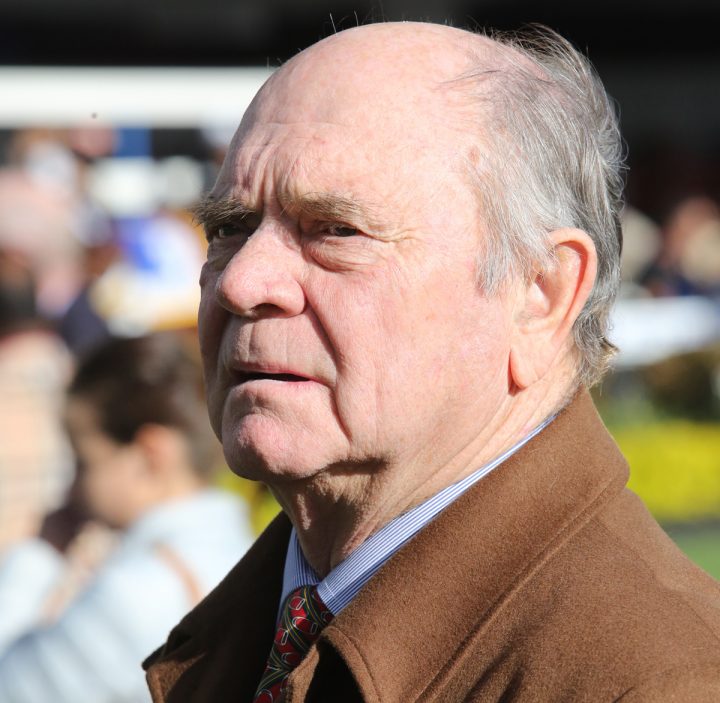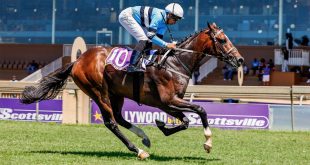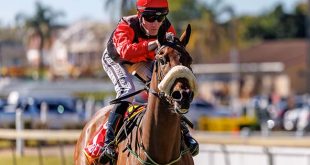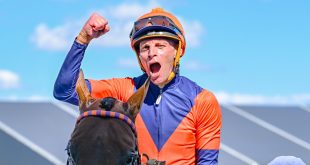Veterinarian Dr Johnny Cave of Baker and McVeigh is fast gaining a reputation as one of the best in the business for wind operations in thoroughbreds and two of his latest efforts have seen the Dennis Drier Grade 1 winner Sand And Sea making a successful comeback and his older stablemate Wealthy clinching a rare KZN Winter and Summer 2000 Challenge double.
Drier said in his experience wind operations had only a 50/50 success rate but three which had clearly been hugely successful, those on Sand And Sea, Wealthy and Sea Fever, had all been performed by Dr Cave.
Drier said, “Sea Fever came back and won five races and now Sand And Sea’s and Wealthy’s operations have clearly been unbelievable successes.”
The four-year-old Twice Over gelding Sand And Sea looked to be something exceptional when powering home to win the Grade 1 Tsogo Sun Gold Medallion by 2,25 lengths in his second career start to remain unbeaten. However, he continually disappointed as a three-year-old and after finishing a well beaten ninth in the Byerley Turk in April it was discovered he had “completely gone in the wind”.
His breathing problem was due to a common cause, paralysis of the left side of the larynx.
He made his comeback on November 17 at Kenilworth over 1200m and won easily. He unfortunately kicked the float on the way home but has been stitched up and is back on target for the Grade 1 Betting Word Cape Flying Championships.
Wealthy was bought by racing all rounder Peter Gibson at the National two-year-old Sale for R180,000 on behalf of Hong Kong-based owner Robert Chung.
The now six-year-old Silvano gelding began showing promise when stepped up in trip and in the April of his three-year-old year in a stretch of five races between 1800m and 2400m he won three times and finished second twice. Consequently Drier targeted him at the Grade 2 Cape Stayers race on Sun Met day. However, in his final preparation run over 1800m at Kenilworth he did not finish off the race and was beaten by over eleven lengths.
It was discovered he had gone in the wind, although in a very rare occurrence the paralysis was on the right-hand side of the larynx instead of the normal left.
Chung, due to his past experience of wind operations, was not optimistic about the horse’s future and decided to give the horse to Gibson, who then put together a syndicate of racing friends including himself, Tony Dickinson, Michael Heron, Dean Hayman, Marcus Nel, Sean Singleton and Drier’s wife Gill. They all new what they were in for but their faith in Dr Cave’s expertise has paid dividends.
Wealthy made his comeback in October last year and slowly came to hand. After three unplaced runs he earned four cheques in succession and two runs later won the R200,000 KZN Winter Challenge 2000 in June this year.
On Sunday at Scottsville Wealthy was having his second run after a layoff in the R200,000 KZN Summer Challenge 2000 and finished strongly to win by 0,6 lengths, much to the excitement of the on course owners who had also taken advantage of the Tote pay outs of R21,30 a win and R4,90 a place.
A wind operation is an intricate operation performed by key hole surgery under full anaesthetic and a lot depends on the skill of the surgeon. Cave does all of them at Baker and McVeigh where the policy is to do them with the horse lying down on a table as opposed to standing up.
John McVeigh, the owner of the practice said If doing it that way you require two very strong and brave assistants during the recovery period to hold the horse down as the horse can injure itself if trying to get up too quickly upon regaining consciousness.
The thoroughbred breed will forever be plagued with respiratory problems due to its anatomical design.
The right laryngeal nerve has a simple route, branching off from the vagus nerve, which comes from the brain, and travelling directly to the larynx.
However, the left laryngeal nerve instead must travel all the way to the heart, where it wraps around a large pulsing artery, before coming all the way back to the larynx. It is the longest nerve in the horse’s body and so it stands to reason that it is commonly damaged.
The most common cause of any abnormal respiratory sound is idiopathic left laryngeal hemiplegia (paralysis of the left side of the larynx).
This condition is caused by degeneration of the nerve that supplies the left side muscles of the larynx.
The left side of the larynx consequently “hangs” inward, instead of moving in and out in symmetry with the right side.
There is evidence that thoroughbred’s suffering from biliary are vulnerable to laryngeal paralysis, because the disease causes the artery around which the laryngeal nerve wraps to have an elevated pulse rate.
Long necked horses are also thought to be more predisposed to left nerve damage simply due to stretching of the nerve.
Ninety percent of weakness or paralysis of the larynx is on the left side.
Wealthy’s right-side nerve damage was most unusual.
The paralysis causes an inspiratory ‘whistling’ or ‘roaring’ sound during cantering or galloping due to the obstruction of airflow to the lungs.
As early as the 19th Century, an operation known as the Hobday was performed. It involves making a surgical incision into the larynx under the throat to remove both ventricles and the left vocal cord and is still used today on horses who have lower grade wind problems.
In the 1970s, an ingenious procedure, termed “tie back”, was devised to replace the paralysed muscle with a suture to hold the affected cartilage out of the airway during exercise.
Both Sand And Sea and Wealthy had tie backs and they look to have plenty more races in them.
By David Thiselton









